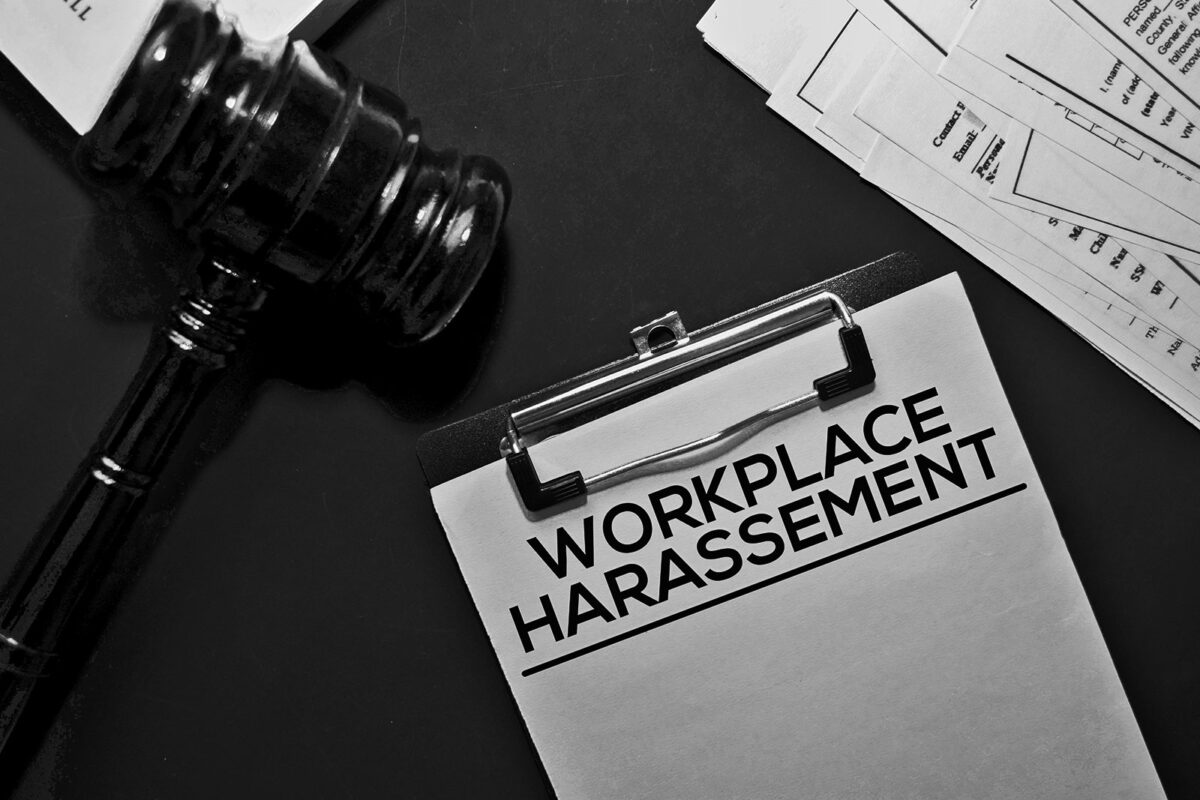In Ontario, employers have specific responsibilities regarding harassment in the workplace under the Occupational Health and Safety Act (“OHSA”). Employers have a responsibility to ensure a safe and inclusive work environment for their employees, which includes addressing issues related to workplace harassment. Additionally, preventing workplace harassment is crucial as it may lead to discrimination under the Ontario Human Rights Code (“OHRC”) and result in costly liabilities.
What are the statutory responsibilities of employers regarding workplace harassment?
As per Clause 32.0.1 (1) (b) of the OHSA, employers are obligated to create a policy concerning workplace harassment. Moreover, Clause 32.0.6 of the OHSA mandates employers to establish and maintain a documented program to execute the workplace harassment policy.
Employers have a responsibility under Clause 32.0.7 of the OHSA to safeguard their workers from workplace harassment. This includes:
- Conducting appropriate investigations into any harassment incidents or complaints, and
- Informing both the worker who allegedly experienced the harassment and the alleged harasser (if they are also a worker of the employer) of the investigation results in writing.
- Corrective action taken or to be taken as a result of the investigation should also be communicated.
- Review of the workplace harassment program, which should be implemented according to Clause 32.0.6, at least once a year to ensure it is effective.
- Any other duties that may be prescribed.
What is the liability of a company when an employee is guilty of harassment in the workplace?
Typically, employers cannot be held responsible for instances of harassment committed by their employees. However, courts have held employers vicariously liable when the harassment occurred “within the scope of employment”.
The Supreme Court of Canada formulated a test for determining the question of an employer’s vicarious liability in Bazley v Curry. In Bazley, the Supreme Court set out a list of factors relevant to analyzing the connection between an employer’s creation or enhancement of a risk of sexual harassment by an employee.
In Ivic v Lakovic, the Ontario Court of Appeal summarized the Bazley factors, which include:
- the opportunity that the enterprise afforded the employee to abuse his or her power;
- the extent to which the wrongful act may have furthered the employer’s aims (and hence be more likely to have been committed by the employee);
- the extent to which the wrongful act was related to friction, confrontation or intimacy inherent in the employer’s enterprise;
- the extent of power conferred on the employee in relation to the victim;
- the vulnerability of potential victims to wrongful exercise of the employee’s power.
In Osmani v. Universal Structural Restorations Ltd., the Ontario Superior Court of Justice applied the Bazley test to determine the company’s vicarious liability for its employee’s wrongful acts. This decision is also a reminder for employers that, besides the OHSA, failing to address workplace harassment may incur liabilities under OHRC. In that case, the supervisor harassed and assaulted the plaintiff. The Court opined that the hierarchy in the company placed the plaintiff in the supervisor’s crew, and he was subject to the supervisor’s direction and control in relation to duties performed for the company. Additionally, the company failed to fulfill its obligation to conduct an appropriate investigation into the allegations of workplace harassment. This failure in the circumstances amounts to discrimination under s. 5(1) of the OHRC.
Therefore, in addition to $110,000 as the damages for battery and assault, the company was held vicariously liable for $50,000 as the damages for discrimination under the OHRC.
In summary, when the wrongful act (sexual harassment, for example) was not authorized by the employer, the imposition of vicarious liability on the employer will be justified, if the wrongful act of an employee is sufficiently related to conduct authorized by the employer.
What if the employer fails to address workplace harassment?
As noted above, employers may face vicarious liability for employees’ workplace harassment. In addition, the failure to address the issue of workplace harassment may attract constructive dismissal claims.
In Disotell v. Kraft Canada Inc., the Ontario Superior Court of Justice has made it clear that an employee who experiences prolonged harassment from colleagues can be considered constructively dismissed from their job. The employer has a clear obligation to maintain a harassment-free work environment, and failing to take necessary actions after receiving a verbal complaint from the employee’s manager is a clear violation of this obligation. It is imperative that employers take all necessary steps to prevent and address workplace harassment to ensure the safety and well-being of all employees.
What if the harassment occurred outside of the workplace?
Under OHSA, employers have an obligation to prevent workplace harassment, investigate incidents and make policies and programs related to workplace harassment. According to Clause 1 (1) of OHSA, workplace harassment means “(a) engaging in a course of vexatious comment or conduct against a worker in a workplace that is known or ought reasonably to be known to be unwelcome, or (b) workplace sexual harassment”. OHSA defines a workplace as meaning any “land, premises, location or thing at, upon, in or near which a worker works”.
Although OHSA seemingly only captures harassment “in a workplace”, it is worth noting that courts and tribunals tend to give a broad definition of workplace. In Rainy River v Olsen and Ontario (Ministry of Labour) v. 614128 Ontario Ltd. (Trisan Construction), both the Ontario Superior Court of Justice and Ontario Court of Justice state that the definition of “workplace” should be broadly viewed. Given that OHSA is remedial legislation, it is to be interpreted and applied in order to protect and enhance the rights of workers and, more specifically, to promote public safety and to prevent harm in a wide variety of circumstances.
Similarly, in Miller Group Kakabeka MDMC v A Director under the Occupational Health and Safety Act, the Ontario Labour Relations Board held that the definition of a workplace under Clause 1 (1) should be interpreted broadly in order to extend protection to the full breadth of workers as intended by OHSA. As a result, the tribunal found that the snowplough in which the worker was physically located at the time of the traffic accident and the highway on which he was operating that snowplough can be construed as his “workplace” for the purposes of OHSA.
Additionally, harassment, even outside of the workplace, may attract discipline and even constitute just cause for termination. In Simpson v Consumers’ Association of Canada et al, the Ontario Court of Appeal unequivocally ruled that an employer could rightfully, under common law, terminate a supervisor who sexually harassed employees under his supervision outside the workplace during off-duty hours. In upholding the termination, the Court held that:
“[I]t would be artificial and contrary to the purpose of controlling sexual harassment in the workplace to say that after-work interaction between a supervisor and other employees cannot constitute the workplace for the purpose of the application of the law regarding employment-related sexual harassment.”
What are the liabilities of an employer related to harassment if their employees work remotely?
The pandemic has introduced a novel method of working for numerous individuals – from the convenience of their homes. As noted above, the definition of a “workplace” under Clause 1 (1) of OHSA is broad enough to encompass workers working remotely. Therefore, employers are generally bound by the same obligations even in a fully remote work environment.
It is important for employers in Ontario to familiarize themselves with the OHSA to understand their obligations and responsibilities regarding workplace harassment. Seeking guidance from legal professionals specializing in employment law in Ontario will provide further clarity on employer liabilities and obligations under the OHSA.
If you need guidance from an experienced employment lawyer, contact Hum Law today at (416)214-2329 or Complete our Free Assessment Form Here.



[…] employer could be liable for the harassment under certain circumstances. For example, if the harasser is a manager, who is a directing mind of the employer, the employer […]
[…] The ONSC opined the employer’s abusive conduct was “malicious, oppressive and high-handed” and ordered the employer to pay moral damages of $75,000 plus punitive damages of $25,000, for a total of $100,000. Additionally, the court awarded an additional $50,000 for the employer’s violation of the Ontario Human Rights Code, because the abusive conduct was related to the prohibited grounds. For a more detailed discussion, please see our article, What Are the Standards that Employers Are Responsible for When It Comes to Harassment. […]
Comments are closed.